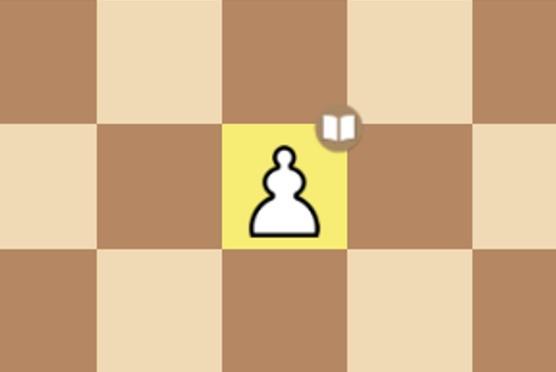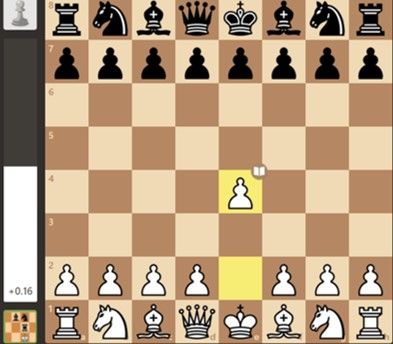
What Is A Book Move In Chess?
When you use Stockfish, the strongest chess engine in the word, to analyze a game that you have played, the initial moves by both players are typically marked as “book.” They are the initial moves known as openings that occur well before the other two phases – midgame and endgame – of a game are reached.

Stockfish marks e4 as a book move and indicates that Whites gains a +0.16 advantage.
Book moves are conventional moves. If you know several conventional openings or book moves, you can quickly and easily plan appropriate responses, an important consideration in blitz games. In addition, you can anticipate how an opponent will respond to your move. A game typically deviates from book moves after several moves are made.

In the Analysis area, Stockfish indicates that White has played a book move and then shows conventional moves for Black.
Book moves are fully identified in the Learn section on the main menu of Chess.com. To see all conventional openings, select Openings. To analyze the strengths of each opening move and a response to it, use the Learn section again but select Analysis instead. The next screen displays a chessboard and incudes five tabs at the top of the right section. Clicking on Openings takes you to “book” moves – the moves expected when a game begins.
Observe that the most conventional opening for White is e4, which gives White an initial modest advantage. For Black to respond and maintain parity, another book move should be considered. Note that the book move is not limited to one, but Black actually has a choice of several.

Initial book moves are easily found in the Analysis area of the Learn section.
Consider how disciplined a chess player had to be before the advent of chess engines, the development of the internet, and the creation of a robust online community like Chess.com. (How archaic life must have been.) Self-study required poring over books, such as Modern Chess Openings – known as MCO -- a reference book as its name implies on chess openings. To achieve credibility these reference books were written (and endorsed) by masters.

The 1st edition of MCO was published more than 100 years ago.
The first edition of MCO was published in 1911. As the book was revised and new editions published, the size increased significantly. The most recent edition, the 15th published in 2008, has 768 pages. Still on my bookshelf is the 10th edition that was revised by GM Larry Evans under the editorship of Walter Korn and published in 1965 (that I bought in 1972 as a birthday present to myself); it’s only 514 pages.

The 6th edition of MCO was edited by GM Reuben Fine. Photo by The Book Collector's Library.
The earlier the edition, the more valuable it is, even with the introduction of chess engines today. For example, the 6th edition, revised by the noted GM Reuben Fine, was recently offered for sale. The price? $350. It was autographed by Fine and had been in the library of Canadian Chess Champion Maurice Fox, who also signed the book.

I've used an edition of MCO for reference for decades. Photo by Better World Books.
Knowing book moves can be helpful, but you are no longer now limited to knowing books. Learning online with Chess.com is much more efficient, productive, and enjoyable.
Now, it's your turn. Do you like to study book moves? Post your comments below. 😊
